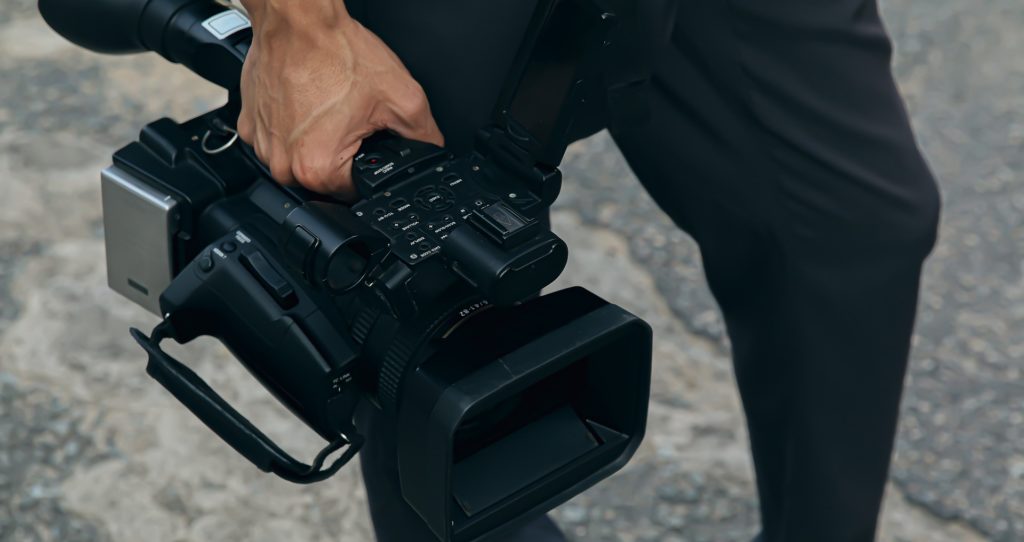Voice-Over Usage and Licensing
A mini guide for video producers
If you make corporate and explainer videos for your clients, and you work with professional UK voice-over artists to do so, you should have heard them mention the terms ‘usage‘, ‘licences‘, or ‘licensing‘.
Chances are, if you know and understand these terms, they’ll be familiar work phrases that are fully incorporated into your business agreements, which is great.
But if you don’t know what usage, licences and licensing are, or why these terms exist, then this article is here to help you – and your clients – plug that knowledge gap and embrace best practice in UK voice-over hiring.
So let’s get down to business.

Hiring a voice-over for a video? Time to get a grip on the situation. Photo: Joseph Redfield Nino from Pixabay
So what are we talking about?
The first thing to say about voice-over usage, licences and licensing is that they’re effectively the same thing.
Whatever expression you go with, the usage, licence or licensing of a voice-over recording describes the limits to which your client can use a particular recording in public under mutual agreement.
And since you’re in video production, we’re specifically talking about voice-overs heard on corporate or explainer videos, which are largely published online.
Where are we talking?
Ok, we’ve established that corporate or explainer videos are mostly published online, obviously.
But online (or the world wide web) is a big place – and it’s getting bigger by the day.
Technology companies continue to create more and more webspace, meaning that a client has more and more places to promote their business.
And tech firms are also creating ever more devices that allow people to access those webspaces – which in turn allows more businesses to connect with more customers.
That’s a lot of usage, and potentially a big audience, which will likely require a large voice-over licensing agreement.

Eye opener: the web is a big, varied advertising space. Photo: Gerd Altmann from Pixabay
Here are some examples of where you might hear a voice-over in a corporate or explainer video online:
- Company website only
- Company website + company Facebook page only
- Company website + company Facebook page + company LinkedIn page + company Twitter page only
- Company website + company Facebook page + company LinkedIn page + company Twitter page + company You Tube page only
- Company website + company Facebook page + company LinkedIn page + company Twitter page + company You Tube page + one-off company Expo only
And the list goes on, depending on where else your client wants to show the video. Instagram, TikTok, or Snapchat, for instance.
So when booking a UK voice-over artist to record a script for a client’s corporate or explainer video that is published online, your first job – as video producer – is to ask your client where the video will be shown – and also ask them to be specific.
For instance, ‘social media’ could mean one (or several) of more than 100 web platforms – not just the most popular ones listed above.
To find out about the others, please see the 101+ Social Media Sites You Need to Know in 2021 here.

A typical animated explainer video you might see – and hear – online. Photo: pictodesign from Pixabay
How long are we talking?
Once you’ve determined where your client wants to show the corporate or explainer video that you’re producing, you then need to ask them how long they want it to be published for.
Again, your client will need to be specific.
Many products, services and promotions, the messages surrounding them – and even the businesses themselves – will have a limited shelf life and declining relevance over time.
Here are some example durations for typical online corporate or explainer videos, with a voice-over attached:
- Company website only, 12 months
- Company website + company Facebook page only, 24 months
- Company website + company Facebook page + company LinkedIn page + company Twitter page only, 24 months
These are all reasonable agreements and timescales for companies wanting to convey a message for as long as it’s likely to remain relevant.
And that’s actually a sensible approach, because it’s only with the passing of time that we realise how strange some old corporate videos appear.
Just look at this one from AOL in the 1990s:
This was web pioneer America OnLine at the dawn of the internet age.
But as we can see, neither the fashions, haircuts, music or graphics have aged at all well. Who even says ”point to point email communication” anymore? Nobody I know, that’s for sure.
It’s a perfect example of why professional UK voice-over artists license their recordings for set media and timescales.
In today’s fast-paced, technology-based world, content dates quickly. And so do voice-over styles.
In fact, the corporate or explainer video that you’re producing right now will probably be out of date by the 2-year mark.
It might even be out of date in 6 months, maybe less.
So when it comes to deciding on the usage or the licensing of the attached voice-over, you should really find out from your client how long they will realistically use the video for – and communicate that information to the artist you’re negotiating with, before they ask you for it.

Your video, your IP. My voice-over, my IP. Photo: Gerd Altmann from Pixabay
Whose intellectual property are we talking?
When a voice-over artist talks to a video production company about licensing their recording for a corporate or explainer video, they are effectively saying:
‘I am giving your client permission to use my voice-over recording for this particular video’.
And, as explained above, they’re also saying:
‘I am also giving your client permission to use my recording in this particular video on the particular websites, and for the particular timescales, as we’ve agreed’.
Under this approach, the client, video production company and voice-over artist all know where they stand: the specifics have been agreed, a legal contract has been formed, and the recording may not be used for anything else.
Additionally, the voice-over artist has licensed, rather than fully assigned or transferred, their intellectual property rights.
This is a key legal point, which everyone in your video production company – and your client – should be aware of.
If you don’t understand this, then I would encourage you to seek independent, professional legal advice.
But in simple terms, when your video production company enlists the services of a voice-over artist for your client, the client is effectively hiring out the performance in the same way that they might rent or lease a car, stream a song on Spotify, or rent a film on Netflix or Amazon Prime.

Money talks: make sure your voice-over budget is realistic. Photo: Christopher Bill from Unsplash
How much are we talking?
By this point, you and your client will have a plan for where and how long they’d like to show the video that you’re producing.
The next step is to establish a suitable budget to compensate your chosen voice-over artist for their time and skills – along with an additional budget to account for the exposure (or usage) of the video.
Granted, it’s not easy talking about money. But this is the most critical part of the process, because a low budget and demands for excessive usage are likely to collapse negotiations with an established professional.
As a rule of thumb, you should expect the cost of any voice-over recording for a corporate or explainer video to start with the artist’s standard hourly recording fee. This is often called the ‘BSF‘ (basic session/studio fee).
For published videos, a usage (or licensing) fee will then apply. Shorthand for this is:
BSF + usage
And the broader the usage, the larger the fee should be.
So if your client wants to publish the finished video to the company website and the five main social media channels (Facebook, Twitter, LinkedIn, YouTube and Instagram) for 24 months, both you and your client should expect this to cost more than merely placing the video on the company website for 12 months.
You should also both expect to budget for retakes or script alterations, once the voice-over has been submitted (although a well written script and a good brief should ensure that you won’t need any).
As the video producer, you should familiarise yourself with standard UK voice-over rates for corporate and explainer video work and manage your client’s budget expectations.
You can see suggested UK voice-over rates for corporate and explainer videos here. Please click on the @Internet tab.
It’s worth saying at this stage that the above link is a rate guide. All voice-over artists are free to charge their own rates.
Every project is also unique – and so it’s also up to artists and hirers to negotiate, respect each other’s point of view, and to be realistic about pricing.
However, if a client is spending a few thousand pounds on an animated explainer video, then a reasonable portion of the budget should be allocated to the voice-over and its usage.
After all, without a voice-over, the whole point of the explainer video – which is to explain and carry key messages – is lost.
Indeed, the value of hiring a good voice-over, whose voice suits the tone of the project, should not be underestimated.
A talented and well cast voice will bring a script to life, maintain viewers’ attention, enhance animated visuals, properly represent your client, convey personality and relatability, tell a compelling story, leave a lasting impression and generally reflect well on your business.
It is worth the investment.
Talking points for video producers and clients
Thanks for reading this far. We’re nearly wrapped, but let’s recap the main points that you should keep in mind when you hire a UK voice-over artist to work on your next corporate or explainer video:
- Published videos are priced at BSF + usage (to be determined and negotiated)
- Video content dates, so licensing a voice-over is a natural and sensible choice
- Licensing and setting clear usage limits allow all parties to share in a professional, legal contract
As a bonus, please find below a video producer and client checklist that you can use when new business comes calling:
Video producer & client voice-over checklist
1. Where would you like the video to be published?
2. How long do you want it to be published there for (recommended 2 years maximum)?
3. How much would you like to spend on the entire project?
4. How much do you plan to allocate to the voice-over?
5. Is the client’s total budget, including voice-over and usage, realistic? If yes, move on to the next step. If no, manage the client’s expectations and set limits on where the voice-over will be used.
6. Select a professional voice-over artist who will be suited to the project.
7. Brief the artist on the overall project and budget.
8. Refine the terms of your agreement as necessary, including usage, costs of re-takes, script changes, payment terms etc.
9. Send the artist the final script to record.
10. Once signed off, enjoy the finished video and measure the return on your investment.
Thanks for reading and happy hiring.
If this article helped you, and you feel it will help others, please share it via the social media buttons below.
Further reading
How To Hire A UK Voiceover Artist – Chas Rowe
Performers’ rights
Performers’ rights – CopyrightUser.org
Further hiring tips
Voiceover Licensing – A Guide For Hirers
Rates guidance
Disclaimer
The above article’s legal information does not constitute legal advice. Clients, video producers, voice-over artists and anyone seeking clarification of legal terms should seek their own legal advice from a qualified legal practitioner or trade union legal department.
About the author
Chas Rowe is a UK voice-over artist, writer, former radio journalist and newsreader, and an advocate for best practice in professional voice-over production and hiring.
He holds degrees in French and German, Film & Television Studies and Multimedia Journalism.
To hire Chas for your next voice-over project, or to discuss syndication of this article, please email: [email protected]
© Copyright Chas Rowe 2021




